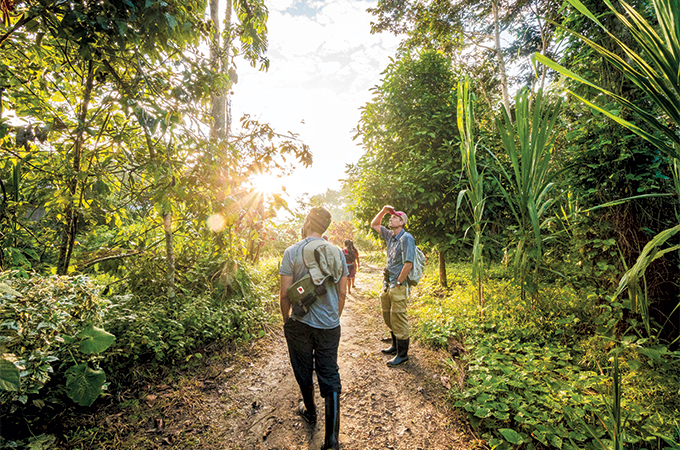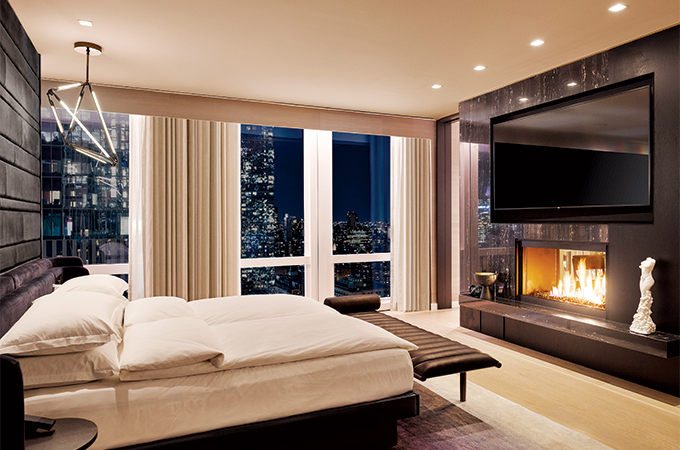With the focus shifting from sleep to true circadian health and a surge in energy medicine to the rise of wellness music and the wellness sabbatical, experts identify trends that will shape the future of wellness travel


The trends emerged from the insights of the 550 experts from 50 nations that gathered at the recent Summit, including top economists, doctors, academics, technologists and the CEOs of international corporations across all fields of wellness–making for a uniquely informed and global set of predictions.
We glean five trends we think will affect the wellness tourism product specially:
Focus shifts from sleep to true circadian health: A major shift in wellness is predicted: less focus on solutions targeting sleep/fatigue and a new focus on circadian health optimisation, not only so we can sleep but to boost the brain/body systems controlled by the circadian clock.
Enter a new travel concept: the wellness sabbatical, where days of work and wellness are intentionally blended, at destinations that actively, creatively make this possible
Hotels, wellness resorts and airlines have gone all-in on sleep, throwing every amenity/programme imaginable at travellers’ exhaustion. Now the travel industry will think beyond the sleep massages and bed wars, and circadian science will transform travel.
Jet lag is being eliminated by the Timeshifter app. Input your itinerary, and Timeshifter gives you a personal schedule of when you must take/avoid bright light, sleep and not sleep, etc. It works like magic; Six Senses and United Airlines have already signed on. We’ll see more circadian “light moves” at destinations such as Germany’s Lanserhof Tegernsee’s circadian medicine programme, with medical analyses of guests’ sleep-wake rhythms, light therapy and blue light-filter glasses at night, high-tech beds and sleepwear that optimise sleep temperature, and kill-switches in rooms that shut off all light and wi-fi.
We’ll also see more people adopting a circadian diet: eating when it’s light, stopping when it’s dark.
Circadian medicine is moving fast. In a few years, it’s likely that a single blood, saliva or breath sample will be able to pinpoint our precise circadian clock-state, and apps could then inform us when to take in light and dark, sleep and rise, and eat and exercise. We expect some circadian market mayhem ahead (very bright and dim ideas). But the right timing of light and biology will move closer to the heart of wellness.
Energy medicine gets serious: Energy medicine is at a pivotal moment, with the medical world and “ancient wellness” finding some common–at least in principle–theoretical ground.
Scientific researchers are discovering that the human body is indeed a complex biofield of electromagnetic frequencies and light waves that serve as control central for our physical and mental functioning–and that we’re also immersed in other complex environmental electromagnetic fields that change human cells.
The future: solutions shielding us from the biophotonic blitz. Architects will design homes, schools and workplaces to maintain a healthy human energy field. Wellness resorts and real estate developers are already making moves: At Germany’s Villa Stephanie, a flick of a button copper-lines your room so electricity and wi-fi is blocked; Troon Pacific’s luxury homes have shielded cables in bedroom walls to block exposure to electromagnetic fields, and flipping lights off at night also means flipping off wi-fi.
More wellness destinations will go “high energy”: serving up even more ancient energy medicines, more cutting-edge energy technologies, and more blending of both ancient and modern solutions. Six Senses Resorts’ “Grow a New Body” programme – dubbed “neo-shamanism – deploys many approaches to fix your energy body. On the modern side, energy-medicine evaluations with doctors, light therapies, altitude training, and ozone and oxygen therapies –while ancient shamanic approaches include mitochondria-boosting diets, fasting, plant medicine, and intensive spiritual work to clear negative emotions.
The wellness sabbatical: The current vacation model: work like mad and take a week of vacation where you’re supposed to totally switch off. A great model, but one that doesn’t work for many people anymore. As work has become “always-on,” more people aren’t taking their vacation days, and vastly more people are remote/independent workers with no formal vacation time. The reality: more people desperately need a profound wellness break, but they need to keep working.
Enter a new travel concept: the wellness sabbatical, where days of work and wellness are intentionally blended, at destinations that actively, creatively make this possible. On a wellness sabbatical, you’re set up to work a few productive hours a day (great workspaces, technology), but you also schedule a lot of daily wellness experiences (healthy food, movement, time in nature, sleep, human connection, etc.). And repeat, hopefully for a minimum of three weeks, that sweet spot to jumpstart lasting lifestyle changes and for a true mental reset.
Kamalaya in Thailand just unveiled a Wellbeing Sabbatical programme, which (with a minimum 21-day stay) goes far deeper than a mere “recharge,” and where the comprehensive daily healing experiences (including personal mentoring) are flexibly designed around guests’ work schedules. Vana in India just unveiled its 30-day wellness sabbatical, where great technology and workspaces mean having that conference call after an appointment with a Tibetan Healing doctor. At Mexico’s Rancho La Puerta, execs are checking into casitas with private pools and offices to interweave a few hours of work each day with immersion in their 365-degree wellness offerings. More top wellness resorts, typically designed around 1–2 week stays, will expand to 21-day, flexible work+wellness programmes.
Wellness music: We all self-medicate through music, but most people don’t grasp just how powerful the medical evidence for music therapy is: Humans are hardwired for music; no other stimulus positively activates so many brain regions; and stringent studies show its dramatic impact on mood, anxiety and pain.
Music is emerging as one of the hottest trends in wellness, and wellness concepts are shaking up the massive music industry.
We’ll see ear-opening, new music and sound experiences at travel destinations too. Wellness resorts have launched so many sound baths. More wellness studios, such as London’s Mind Like Water, will put rich menus of sound healing under one roof, whether Ayurvedic sound therapy massage or CBD sound journeys.
Some really new acoustic experiences will hit wellness travel. “Deep listening” in noise-protected nature looks to be a fascinating development. In Amazon Awakenings’ “Let it Happen” trip, acoustical ecologist Gordon Hempton leads travellers on an “interactive sound journey” in the sonically stupendous Ecuadorean rain forest, at the first noise-pollution-free Wilderness Quiet Park. You learn to recover your lost animal-alert, 360-degree hearing, and practice “deep listening exercises” to identify the natural “drumbeats, violins, raindrops and choruses” around you.
Identifying good from fake: The industry has been ripe for more rigorous reckoning–whether through media criticism, internal company policing, new vetting and evidence platforms, or government regulation. And the time has come.
Wellness watchdogs will rise, trying to re-establish some distinctions between legitimate wellness approaches and practitioners and charlatans who give wellness a bad name. People want help separating wheat from chaff, and more resources will help them do it.
Most people wouldn’t want the government regulating yoga or meditation, but we predict more governments will become bigger watchdogs of supplements and falsehood-in-wellness- marketing.
There are tens of thousands of medical studies on wellness approaches, despite the fact that the wellness world isn’t on an even playing field, lacking the deep pockets of Big Pharma to conduct big trials among large populations over long periods of time. But there are resources to help you explore all the hard science: The just-upgraded wellnessevidence.com provides direct access to the universe of medical evidence (pro or con) for 28 wellness approaches–from acupuncture to yoga–at the top databases that doctors use: Cochrane, PubMed, TRIP–and also alternative medicine-focused Natural Standards.
